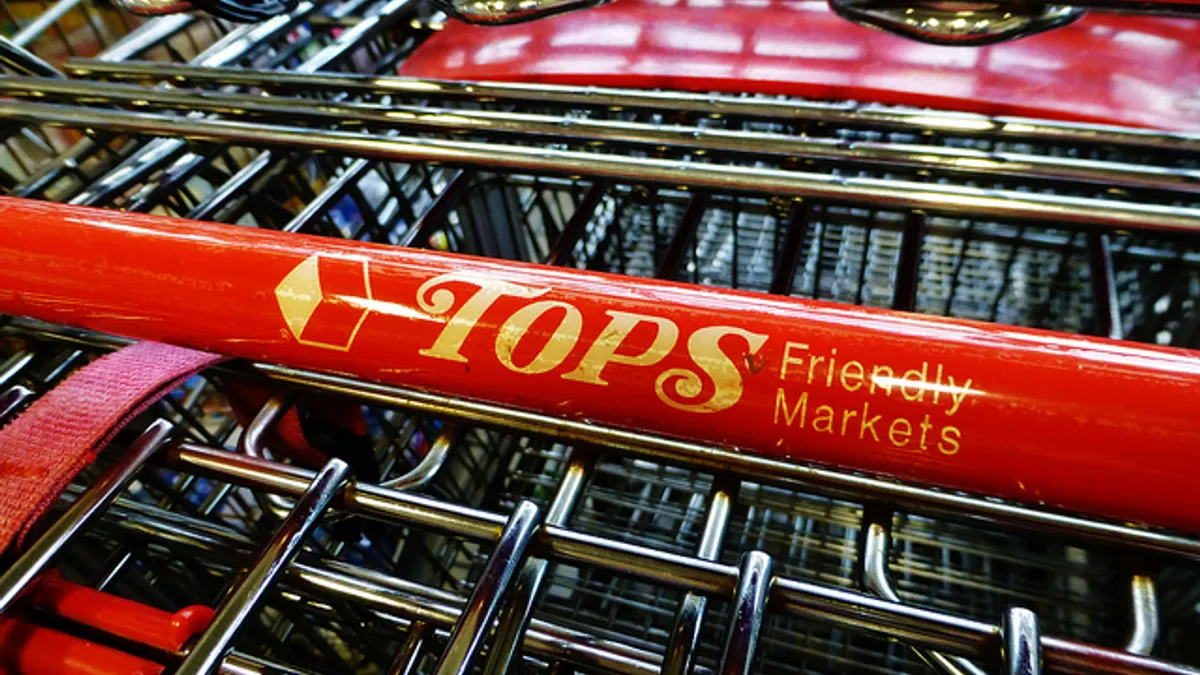Dive Brief:
- Tops Markets LLC announced it has filed for Chapter 11 bankruptcy protection, according to reports. The news, which confirms a Bloomberg report from earlier this week, comes as Tops faces increasing competition and a large debt load.
- According to court papers, former owner Morgan Stanley, which bought the chain in 2007 from Ahold and sold it in 2013, saddled Tops with an "unsustainable" amount of debt. The financial firm, which owned the retailer through its private equity unit, borrowed against its acquisition numerous times.
- Tops said it has received a $125 million debtor-in-possession loan along with a $140 million DIP asset-based loan from Bank of America. The company plans to use this financing to pay down its debt, listed at $1.18 billion, and to keep its stores running during the restructuring period. Tops says it hopes to emerge from Chapter 11 after six months.
Dive Insight:
Tops maintains its business is strong and plans a quick turnaround from Chapter 11 after it addresses its debt issues.
In a statement, CEO Frank Curci said: "We are now undertaking a financial restructuring, through which we expect to substantially reduce our debt and achieve long-term financial flexibility. This will enable us to invest further in our stores, create an even more exceptional shopping experience for our customers and compete more effectively in today’s highly competitive and evolving market."
Chief restructuring officer Michael Buenzow, in a court filing, noted that following its 2007 acquisition of the chain from Ahold, Morgan Stanley Private Equity "saddled the company with an unsustainable amount of debt on its balance sheet." A collective of Tops' senior managers, led by current CEO Frank Curci, bought Tops in 2013 but could never get out from under that debt load.
Like many traditional grocers, Tops is struggling against competitors that offer lower prices and differentiated formats. The chain competes with Wegmans in many markets as well as Walmart, which is driving down prices and competing aggressively online. Amazon, which currently accounts for 18% of online grocer sales, threatens to expand its reach through its site and through recently acquired Whole Foods stores.
But Tops is also working to improve its promotions and operate more efficiently. The grocer recently partnered with Chef'd to offer in-store meal kits, and it slimmed down its bulk departments to focus on faster-moving products. Tops has also put more emphasis on organic foods, revamped its private label offerings and offered special holiday promotions.
Can Tops successfully navigate industry disruption? The chain has loyal customers, and now it has an opportunity to finally address its nagging debt problem. Long-term success, though, will only happen if it can continue to evolve with the times — something many conventional retailers are struggling with.









